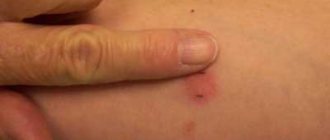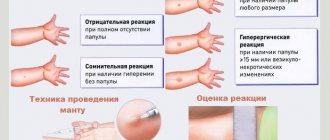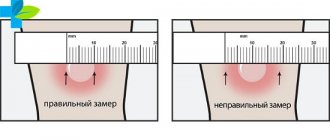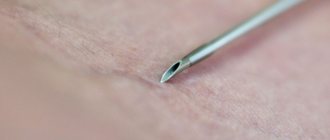Prevention of tuberculosis is an important section of medical work. Tuberculosis infection can affect almost all organs (lungs, skeletal system, membranes of the brain, heart muscle) and can be fatal. The disease is especially dangerous for children in the first year of life. Before the introduction of mass immunization, the mortality rate of children of this age who contracted tuberculosis reached 100%. The BCG vaccination is given to a newborn on days 3-7 of life in the maternity hospital. If the baby is not vaccinated on time, a Mantoux tuberculin test should be performed before BCG.
The relationship between BCG and Mantoux
Many people confuse the BCG and Mantoux vaccinations.
Despite the fact that these two medical procedures are interrelated, it is important to understand the difference between them. If vaccination is a preventive anti-tuberculosis technique, then an allergy test is done to detect this disease
A preventive injection is carried out with serum from an artificially grown weakened strain of bovine tuberculosis bacillus. The BCG vaccine (Bacillus Calmette-Guerin) has been successfully used for 80 years. This is the most used vaccination drug. According to WHO, approximately 80% of newborns are vaccinated with it in countries where this drug is the main component of the state immunization program.
BCG does not prevent primary infection, nor does it block the reactivation of latent pulmonary infection (which is the main source of bacillary spread). Therefore, this vaccine is recognized as having limited impact on the transmission of Mycobacterium tuberculosis. But vaccination reduces the likelihood of infection, helps to avoid complex forms of the disease, and prevents the development of tuberculous meningitis and extrapulmonary tuberculosis.
Mantoux is a tuberculin test that determines whether immunity to the bacillus has been formed. Depending on how the allergic reaction to the drug injected under the skin manifests itself, the presence or absence of antibodies to the pathogen in the body is determined.
Despite the difference between the purpose of vaccination and the purpose of testing, in some cases they should be combined, and in others they should not. If you don’t have BCG, you can and even have to do Mantoux. Children who have not been vaccinated are diagnosed twice a year, as they have no protection against infection. In this case, the test allows you to monitor and promptly detect possible infection.
The test itself cannot cause tuberculosis infection and is absolutely safe. After BCG, the first allergen test for the presence of mycobacteria in the body is done no earlier than a year later, so that specific immunity is formed.
Repeated vaccination is carried out at 7 and 15 years of age, provided that the reaction to tuberculin is negative.
BCG vaccination and Mantoux test: what is the difference and relationship?
Today, tuberculosis prevention is absolutely necessary and is carried out at the state level. First of all, this is the BCG vaccination. It is done to a newborn in the maternity hospital in the first week of his life, if there are no contraindications. BCG does not prevent infection with the tuberculosis bacillus, but it promotes the development of immunity. To control the body's susceptibility to infection, starting from the first year, and then annually, children are given a Mantoux test.
| The reaction to the test makes it possible to judge whether the child has still encountered the tuberculosis bacillus, whether immunity to it has been developed and, accordingly, whether BCG revaccination is necessary. Indications for revaccination are determined based on the body's reactions to the Mantoux test and taking into account the incidence of tuberculosis in the country as a whole. |
BCG is a vaccine against tuberculosis prepared from a strain of weakened live bovine tuberculosis bacillus, which has practically lost its virulence for humans, having been specially grown in an artificial environment.
The Mantoux tuberculin test is a skin test aimed at identifying the presence of a specific immune response to the administration of tuberculin.
Neither BCG nor Mantoux can provoke tuberculosis.
The reaction to the Mantoux test is assessed three days after the injection. The reaction manifests itself in the formation of papules (a rounded area of increased density that rises above the skin) and redness of the skin. Accounting for the reaction consists of a visual assessment of redness (hyperemia) and measurement of the papule. The following reaction options are possible:
- negative (no changes on the skin);
- doubtful (there is redness of any size without a papule or the size of the papule does not exceed 2-4 mm);
- positive, mild (papule diameter 5-9 mm);
- positive of medium intensity (papule diameter 10-14 mm);
- positive pronounced (papule diameter 15-16 mm);
- excessive or hyperergic (the diameter of the papule exceeds 17 mm or there are pronounced signs of inflammation, such as reaction of the lymph nodes, skin ulceration, etc.).
Variants of the reaction to the Mantoux test are interpreted by the medical staff of the institution where the test was carried out. The basic principles of interpretation include the following:
- a negative Mantoux test indicates that the body has not developed antibodies to the tuberculosis bacterium at the time of injection and, accordingly, revaccination with BCG is recommended;
- a questionable sample is considered negative;
- a positive test primarily indicates the presence of antibodies to the tuberculosis bacterium in the body;
- signs of infection (but not disease) are: a change in the tuberculin test (transition of a negative Mantoux test to a positive one or an increase in the diameter of the papule compared to the result of the previous test by ≥ 6 mm);
- hyperergic reaction;
- for more than four years, a persistent reaction to the test with a papule size ≥ 12 mm;
- gradual increase in sensitivity to tuberculin with the formation of papule ≥ 12 mm.
Infection with Mycobacterium tuberculosis does not mean the development of the disease. Signs of infection are a recommendation for monitoring the child with a TB specialist; it is possible to prescribe therapy and repeat the Mantoux test after the specified period. The Mantoux test does not diagnose tuberculosis; it is an indicative test that demonstrates whether the body has encountered the tuberculosis bacillus and whether it has developed antibodies in response to this.
The following are considered absolute contraindications to Mantoux:
- skin diseases;
- acute infectious diseases;
- chronic diseases during exacerbation;
- allergic conditions, rheumatism, bronchial asthma.
Parents should understand that the test allows one to draw a conclusion about how sensitive the body is to tuberculosis infection. It is important to understand that you cannot become infected from such an injection. Dead tuberculosis bacteria are introduced into the body; they cannot infect the body, but if the reaction goes beyond the normal range, this means that the entry of live bacteria into the body will be fatal.
Instructions for parents: what to do if the BCG vaccination is not visible
If a baby is injected with BCG or BCG-m, then after a few months he will have a characteristic scar on his shoulder. If it is not available, consult a pediatrician and, if necessary, a phthisiatrician.
This situation occurs when a low-quality (expired) vaccine is used, the drug is administered incorrectly, or in the presence of a powerful innate immune system.
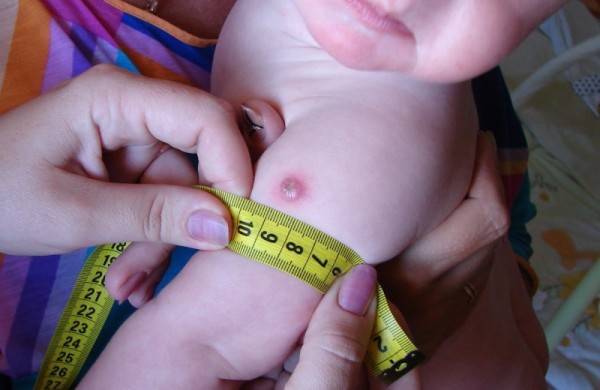
Photo 2. The child had a scar at the site where the vaccine was administered, which means the vaccine was of high quality.
Pay attention to the following points:
- if there is no trace of BCG, doctors recommend re-vaccination 2 years after the first vaccination;
- a mandatory condition for revaccination is a negative Mantoux test;
- If doubtful or positive results of the tuberculin test appear, BCG is prohibited.
If the child does not have a scar after the introduction of a weakened Koch bacillus, then parents should minimize the child’s contact with potential tuberculosis patients. After all, they are more likely to become infected and progress to a severe form of the disease. Pediatricians and TB specialists recommend revaccination of such patients.
Revaccination with BCG
Healthy children and adolescents of decreed ages who have a negative Mantoux test are subject to revaccination. The 1st revaccination of children (vaccinated at birth) is carried out at 6-7 years of age (1st grade students).
2nd revaccination - at the age of 14-15 years (students of the 9th grade), as well as for adolescents of secondary specialized educational institutions (vocational schools, technical schools) in the first year of study. In regions unfavorable for the epidemiology of tuberculosis, revaccination is carried out at inter-decreed ages for children and adolescents who do not have vaccination marks, 2 years after vaccination and 1 year after revaccination. At the same time, revaccination of children and adolescents who have belt medical exemptions from vaccination at decreed ages is carried out.
Revaccination of adults (18-30 years old) is carried out in organized groups. The timing of revaccination is determined taking into account the epidemiological situation of tuberculosis in the relevant region. Revaccination of adults is carried out with a negative and questionable Mantoux reaction.
Complications after BCG vaccination and advice for parents
Medical statistics indicate that the percentage of complications after BCG vaccination is extremely low - about 0.06%. In most cases, this occurs due to improper administration of the drug, when it is administered subcutaneously rather than intradermally. In this case, a keloid scar may appear at the injection site. It consists of connective tissue that is dense to the touch and tends to grow. It is removed surgically.
In rare cases, after vaccination, a child may develop lymphadenitis, lupus, and other BCG infections. But in most cases, children tolerate the consequences of the injection well.
Parents are often concerned that a small ulcer appears at the injection site after 1.5-2 months. It can take on a red, purple, bluish color, fill with purulent contents, and be very itchy. However, this is a normal physiological process. It means that mild tuberculosis infection continues, the body is actively fighting the infection, antibodies are produced in the blood, and immunity is being formed.
Adults need to make sure that the change in the child’s temperature does not exceed 37.5°C and begin to care for the wound at the site of vaccine administration - what are the rules:
- You should not allow the ulcer to be scratched; if pus forms inside, there is no need to squeeze it out, you just need to periodically wipe it with a clean cotton swab. Do not lubricate the wound with brilliant green or iodine, bandage it or cover it with a band-aid.
- You need to wait until the artificially created tuberculosis process in the body ends, the ulcer heals completely, and in its place a white scar with a diameter of no more than 1 cm appears. Doctors call it a post-vaccination mark and by its size determine how effective the vaccination was: the larger the scar, the The child has developed stronger immunity.
The time it takes to develop immunity against tuberculosis is different for everyone and depends on the individual characteristics of the body. On average, 2-12 months may pass after the introduction of mycobacterial pathogens. However, parents need to know that it is not advisable to refuse vaccination. Vaccinations should be given to both newborns and children aged 7 and 14 years. After a full cycle, immunity to tuberculosis pathogens in the body remains for approximately 30 years.
The BCG vaccine itself does not protect against infection, but it guarantees that the disease will not take severe forms that can lead to disability or death, including in early childhood.
Specific prevention (BCG vaccination and revaccination)
The BCG vaccine was obtained by French scientists Calmette and Guerin in 1919 from a bovine MBT culture that had lost its virulent properties and retained all the immunogenic properties inherent in MBT.
BCG and BCG-M vaccine preparations are live mycobacteria of the BCG vaccine strain, freeze-dried in a 1.5% solution of monosodium glutamate, and have the appearance of a white dried mass.
One ampoule of BCG vaccine contains 0.1 mg of vaccine (20 doses of 0.05 mg each). One ampoule of the BCG-M vaccine contains 0.5 mg of the vaccine, which is 20 doses, each containing 0.025 mg of the drug. This is a drug with a reduced antigenic load and is used for gentle immunization.
Live mycobacteria of the BCG strain, multiplying in the body of the vaccinated person, lead to the development of long-term specific immunity to tuberculosis. BCG and BCG-M vaccines are used for active specific prevention of tuberculosis.
BCG vaccination
- Primary vaccination is carried out on healthy newborn children on days 4-7 of life in a separate room. The vaccine is administered strictly intradermally, into the upper third of the left shoulder.
- Children who were not vaccinated in the maternity ward should be vaccinated in children's clinics within 2 months with the BCG vaccine, without prior tuberculin testing. Children over 2 months of age must undergo a Mantoux test before vaccination.
- Children with a negative reaction to tuberculin are vaccinated.
- Children who were not vaccinated in the maternity ward due to medical contraindications should be vaccinated at the pediatric site with the BCG-M vaccine.
- The interval between the Mantoux test and vaccination should be at least 3 days and no more than 2 weeks.
- Discharge of a newborn from the maternity ward can be carried out subject to mandatory screening for tuberculosis of the father and relatives living in the same apartment.
- In the absence of a scar for BCG vaccination (BCG-M), the Mantoux test is performed once every 6 months and if the reaction to tuberculin is negative, children are vaccinated at the age of 2 years. If there is a poor-quality scar by the age of one year, children are re-vaccinated with BCG-M at the age of 2 years with a negative Mantoux test.
- In order to early detect complications after BCG vaccination, pediatricians need to observe the vaccination reaction at 1,3,6,9,12 months.
- BCG vaccination (re-vaccination) is carried out 4 weeks after other preventive vaccinations, and after BCG vaccination, other preventive vaccinations are carried out no earlier than 2 months later, that is, after the local vaccination reaction has healed.
With high-quality vaccination, 90-95% of vaccinated newborns should develop a scar measuring 5 to 10 mm by the age of 4 months.
The main differences between vaccination and a routine test
Some parents believe that BCG and the Mantoux test are the same procedures. This problem arises due to insufficient information to the public about the intended purpose and purpose of the vaccination. The formulation of the Mantoux vaccination is erroneous, since it is a special allergy test. If a child is vaccinated with BCG in the maternity hospital, then Mantoux is mandatory at 1 year.
Note! Even a hyperergic (excessive) Mantoux reaction in children is not always a significant cause for concern. The procedure is not an accurate diagnostic procedure and does not require treatment.
Let's summarize the information: what is the difference between Mantoux and BCG?
| Characteristics | BCG vaccination | Mantu sample |
| What substance is being administered? | Vaccine exposure. A strain of live cow Koch bacilli (weakened action) is introduced. The vaccine is grown in an artificial environment and loses its virulence (ability to infect). | Tuberculin is a protein found in the tuberculosis bacillus. |
| What does the medical procedure show? | It does not protect the body from tuberculosis infection, but forms stable immunity to the disease. | Control of the child’s body’s susceptibility to disease pathogens. Based on the results, it is decided whether revaccination with BCG is necessary. |
| How often do they do it? | After birth and every 5-6 years (at the age of 7 and 14 years). If necessary, repeat earlier. | Annually. |
| When does the result appear? | 4-6 weeks after vaccination. | The reaction is assessed on day 4. |
| List of contraindications | They are divided into permanent and temporary. The list is much wider: · existing tuberculosis; · oncology; · Maternal HIV infection and low weight (for newborns); leukemia and lymphoma; · treatment with medications that suppress the immune system. | Skin diseases, exacerbation of chronic ailments, allergies and asthma, ARVI, epilepsy. |
| Possible reactions | Formation of papule (scar). The size of the scar will indicate the level of acquired immunity (duration of resistance). It may turn red, fester, become inflamed, or itch. | Mantoux vaccination, the reaction to the procedure includes the formation of a spot at the injection site (swelling is possible). Reaction: positive of varying intensity, doubtful, negative, excessive. |
| Risk of infection through the procedure | The procedures are not capable of causing tuberculosis. | |
| Mechanism of action | Development of immunity after administration of a substance. | An allergy test that allows you to find out the body’s attitude towards tuberculosis pathogens (immunity level, reaction to infection). |
On a note! The concept of “immunity from Mantoux vaccination” does not exist. A similar expression can only be applied to BCG.
Why do Mantoux and why before BCG
First, it’s worth clarifying: the Mantoux reaction is not a type of vaccination, especially the BCG vaccine. This is only a test with the help of which it is determined whether Koch's bacillus is in the human body or not, and if so, in what quantity and whether there is a progressive tuberculosis infection. There are two main goals:
• identify the latent form of tuberculosis, in which a person is already infected and begins to get sick, but there are still no external signs. At this stage, the pathology can be suppressed by conventional preventive treatment; • prevent the spread of tuberculosis infection by isolating the patient from the team.
In fairness, it must be said that almost all of us are infected with the causative agent of tuberculosis - Koch's bacillus. Mycobacterium enters the human body in the first few years of our life; among the adult population, only 8-10% are not carriers of this infection. But, if everything is in order with the immune system, a person never gets sick with tuberculosis in his life; its pathogens are constantly suppressed in the body. Another thing is small children, whose immunity is still very weak. The highest risk of tuberculosis transitioning from latent to active form is the first 1-2 years after infection.
This is why it is so important to give manta to children after a BCG vaccination given in the maternity hospital. Neither BCG without the Mantoux test, nor Mantoux without BCG provide complete prevention of tuberculosis. But there must be a gap between the two events. So, how long after Mantoux can you do BCG so as not to distort the results, reduce the effectiveness of the vaccination and not provoke allergy symptoms?
What does the Mantoux test tell you?
Symptoms indicating the possible development of tuberculosis in a baby: frequent colds, enlarged peripheral lymph nodes, sleep disturbances, night sweats, poor appetite and poor weight gain. If these symptoms appear, the pediatrician will prescribe a tuberculin test or Mantoux test.
The Mantoux test is the main method for diagnosing tuberculosis in children. It should be done regularly once a year, regardless of the previous result, or twice a year if the child has not been vaccinated with BCG and the body is not yet protected by the vaccine.
The sample is evaluated 3 days after it is carried out. The contours of the red spot (hyperemia) or “button” (infiltrate) are not always perfectly round, so the doctors agreed to measure the result in millimeters, holding a ruler perpendicular to the axis of the hand.
The reaction is considered negative if on the 3rd day there are no marks on the skin - neither redness nor swelling. This means that the vaccination given in the maternity hospital no longer protects the baby - it’s time to administer the BCG vaccine again. Usually its action lasts for 5 - 7 years.
A questionable reaction is slight redness without a “button” or in the presence of a small infiltrate - 2 - 4 mm. With this result, it is impossible to say for sure whether the child is protected from tuberculosis or not. In controversial cases, the Mantoux test must be repeated.
A positive reaction is a pronounced infiltrate with a diameter of 5 mm or more. You don’t have to worry about your child—he won’t be at risk of tuberculosis for the next year.
A hyperergic (excessive) reaction is a “button” of considerable size - 17 mm or more. Usually, with this result, they are referred for consultation to a tuberculosis specialist - a phthisiatrician. It is especially alarming if there has been a so-called change in tuberculin tests - last time the reaction was negative or doubtful, but now the result has gone off scale. In this situation, there is a possibility that the baby has become infected.
Please note that a specialist must evaluate the reaction.
Some parents believe that there is no point in doing a Mantoux test for allergy sufferers - the reaction will always be positive or even hyperergic. In reality, there are not as many children with allergies as it seems - about 7%. If the doctor suspects that a positive result is caused by an allergy, the Mantoux test will be repeated after 4 - 6 weeks. Has the reaction waned? This means that allergies really intervened. If the baby is sensitive to many allergens, a week before the Mantoux test, the pediatrician will recommend giving him desensitizing drugs such as Suprastin or Claritin.
Interestingly, the Mantoux sample is more than 100 years old. Such a respectable age commands respect and guarantees reliability. The first sample of this kind was made at the end of the 19th century by Robert Koch, who discovered the tuberculosis bacterium. In 1907, the Austrian doctor K. Pirke proposed his own method - to apply a scratch to the skin with a special steel feather (scarifier) and drip a diagnostic substance - tuberculin - onto it. However, the method of the French scientist C. Mantoux turned out to be more reliable, which was adopted all over the world in 1909, and in our country since 1975 (before that, Soviet children were tested for the Pirquet reaction).
BCG, Mantoux, T-SPOT - what is it and why does a child need all this? Pediatrician answers
Take, for example, the classic tuberculosis vaccination and the Mantoux test, which is designed to reveal the effectiveness of its work - not everyone understands how and why all this is done. We asked Elena Podstrigich, a pediatrician at the DocDeti clinic, about what parents need to know about BCG and how to diagnose tuberculosis in children.
Why should BCG be done in the maternity hospital? Can't we wait?
The BCG vaccine is, indeed, administered to newborn children already in the maternity hospital. This is done so that the baby is protected from tuberculosis from an early age.
Of course, you can wait and get the vaccine later, but you need to know and consider the following:
The effectiveness of the BCG vaccine decreases over time. The later vaccination is carried out, the worse the protection may be.
If BCG is not performed before the child is two months old, then in the future it will be possible only after a Mantoux test has been previously performed and its result is negative.
The nurse who administers BCG in the maternity hospital has more experience in administering this vaccine, which means the child has a lower risk of post-vaccination complications due to improper administration of the drug.
Why are they still doing BCG in Russia?
BCG is not performed all over the world. Russia is still considered a country with a high incidence of tuberculosis. Russia is one of the twenty countries in the world with the least favorable situation for the spread of tuberculosis. Russia, along with China and India, is one of the top three in terms of the number of cases of resistant forms of tuberculosis.
Many parents are frightened by their child's reaction to vaccination. What should everything look like normally? What can you do? What should you not do after vaccination against tuberculosis?
After vaccination against tuberculosis, there are no restrictions on the child’s regimen and care, but you need to know that four to six weeks after BCG vaccination, a specific local reaction in the form of infiltrate, papules, pustules, and ulcers of size five may consistently develop at the site of intradermal injection of the vaccine. - ten millimeters. The reaction undergoes reverse development within two to three months, and sometimes more.
In 90-95 percent of vaccinated people, a scar up to ten millimeters in size subsequently forms at the site of vaccine administration.
It is prohibited to apply a bandage and treat the vaccine injection site with iodine and other disinfectant solutions during the development of a local vaccination reaction: infiltration, papules, pustules, ulcers.
The site of the reaction should be protected from mechanical irritation, especially during water procedures (do not rub with a washcloth).
What are the true medical benefits of BCG?
Each vaccine has its own contraindications. BCG was no exception. There are the following contraindications for its administration:
premature babies (birth weight less than 2500 g);
acute diseases;
exacerbation of chronic diseases;
immunodeficiency state (primary);
malignant neoplasms;
generalized BCG infection detected in other children in the family;
HIV infection in the mother.
When is the first Mantoux test done? Why is it needed and why is it so often confused with vaccination?
The first Mantoux test is performed 12 months after vaccination against tuberculosis. If vaccination against tuberculosis has not been carried out, then the first Mantoux test is given to the child at the age of six months.
The Mantoux test is carried out to detect infection with tubercle bacilli, timely registration and dispensary observation of the child.
The Mantoux test is not a vaccination, it is a skin test.
Alternative types of diagnostics - T-SPOT or Diaskintest - completely replace the Mantoux test? Why do many people think that the Mantoux test is an outdated type of test and refuse it?
The Mantoux test and Diaskintest are skin tests. The T-SPOT and Quantiferon test are in vitro tests.
The Mantoux test is performed for children from two months of age, Diaskintest - from 12 months, T-SPOT and quantiferon test - from five years. All of them are aimed at identifying a child’s infection with tubercle bacilli.
Globally, it does not matter which of these tests will be performed on the child. The main thing is that the child undergoes one of these tests every year in order to detect infection in a timely manner.
Indeed, of all the tuberculosis diagnostic tests available today, the Mantoux test is one of the oldest, which means that it is one of the most proven and reliable tests.
If you don’t give your child the Mantoux test or don’t do it regularly, can you miss the development of tuberculosis?
If you do not give your child a Mantoux test or any other alternative test, then you can miss the moment of infection, miss latent tuberculosis - a condition in which Mycobacterium tuberculosis is present in the human body, causing a positive reaction to tuberculin, but there are still no clinical and radiological signs of local tuberculosis.
What to do if Mantoux's reaction is suspicious?
To evaluate the result of the Mantoux test, there are clear criteria that every pediatrician knows. There are also clear indications for consultation with a phthisiatrician. If, when assessing the result of the Mantoux test, the pediatrician identifies at least one of these indications, then the child is sent for a consultation with a phthisiatrician.
Is it true that the Mantoux test should not be wetted and the child should not be given sweets after the procedure?
The main task of parents after performing the Mantoux test on their child is to come to the pediatrician after 72 hours to evaluate the test result.
You can wet the injection site. You can go to the pool and even the sauna. It is not recommended to rub the injection site (in particular, with a washcloth while bathing), scratch it, lubricate it with disinfectant solutions, seal it with an adhesive plaster, or bandage it. After performing the Mantoux test, there are no restrictions on the child’s diet and daily routine.
Do I need to repeat BCG? Under what conditions and at what age?
According to the national vaccination calendar, approved by Order of the Ministry of Health of the Russian Federation dated March 21, 2014 No. 125n, revaccination against tuberculosis is carried out for children aged seven years with a negative Mantoux test.
How often do children in Russia get tuberculosis?
Children suffer from tuberculosis in Russia. Fortunately, the incidence is decreasing. The incidence rate of tuberculosis in children from birth to 14 years of age in 2021 among the permanent population of Moscow was 1.6 per 100 thousand population, which is 11.1 percent lower than in 2018 (1.8 per 100 thousand population).
If there is a relative in the family who was ill and recovered before the birth of the child, is the baby at risk?
If a relative conscientiously follows the recommendations of a TB doctor and is regularly examined, then in such a situation the newborn does not fall into the risk group, and therefore is observed in the same way as all healthy children.
Read more on the topic
Mantoux logic: a great interview with a pediatric phthisiatrist
How to properly, timely and fully vaccinate a child: a chapter from the new book by Sergei Butria
“Vaccines have become hostage to their good quality”: a long interview about vaccinations

Contraindications
Doctors claim that the new technique is safer, but this procedure has no fewer contraindications than the Mantoux test. Before using the test, you must ensure that the test is safe for each individual child.
Neglecting this rule can lead to tragic consequences. Over the few years that Diaskintest has been used to diagnose tuberculosis in children, there have been several cases of severe complications, including coma and death. To avoid tragedy, it is necessary to carefully prepare for vaccination, even if it is a routine test. Parents should inform the doctor about all serious illnesses that the child or close relatives have had, and find out all the possible consequences of the procedure.
The procedure cannot be performed if the child has an elevated body temperature, regardless of the reason. During the quarantine period, no vaccinations are carried out at school or kindergarten. Diaskintest and Mantu are not given to pregnant women and mothers who are breastfeeding.
Absolute contraindications to the test include such violations as:
- epilepsy;
- chronic diseases with frequent relapses;
- hepatitis;
- pancreatitis;
- colitis;
- pyelonephritis;
- allergy to the vaccine itself.
Testing is not done for children under 1 year of age, while the Mantoux test can be performed from 6 months. If we evaluate these two tests, then the Mantoux test has fewer contraindications than the Diaskintest.
The question of the advisability of conducting research in people with allergic reactions of various types remains controversial. The drug can lead to an exacerbation of any allergy. Some doctors recommend taking antihistamines for several days before and after the test. However, since the test itself is an allergy test, this may affect the reliability of the results.
It is difficult to answer the question of which study is better. The new technique is highly accurate, but it has more contraindications and side effects. If the child is healthy and has no hidden diseases, it is advisable to do a diaskintest. In addition, it is worth giving preference to this method if a person has been in contact with a patient with tuberculosis and in case of controversial results of previous Mantoux tests.
Source: Tuberkulez.pro
Why is BCG needed?
By vaccinating your child against tuberculosis, you do not provide him with 100% protection against the disease. This must be understood when deciding whether to consent or refuse vaccination. Legally, you can refuse vaccination, but in reality it may not be so easy. Medical institutions have a plan according to which a certain number of children must be vaccinated. Health care providers may force you to have a BCG injection. Be aware that this is illegal. If they refuse to admit you to a child care facility, citing the lack of vaccination, this is also against the law.
Why is Mantoux most often done before BCG?
The standard vaccination calendar involves performing BCG in the maternity hospital and only a year later introducing a tuberculin test, but Mantoux is often done before BCG. This happens if the newborn had grounds for medical withdrawal:
- prematurity of the baby, premature birth;
- infectious infection of a newborn (purulent or septic type);
- the child's weight is less than 2.5 kg;
- various diseases occurring in acute form.
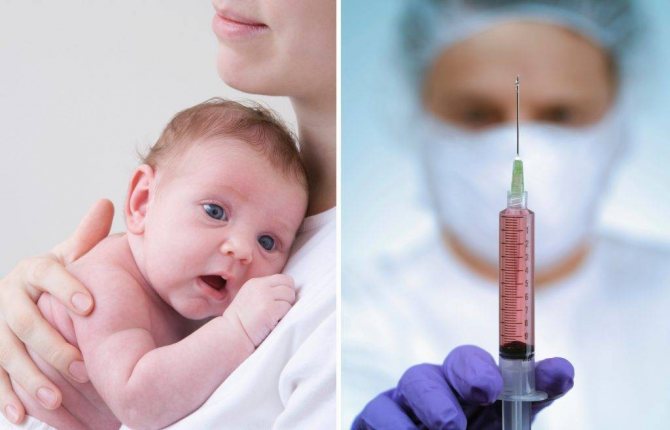
Also, BCG is not done in the maternity hospital if the mother is diagnosed with human immunodeficiency virus, or the child has serious damage to the central nervous system.
Sometimes parents voluntarily refuse BCG in the maternity hospital, but according to statistics, the risk of an infant becoming infected with tuberculosis is much greater than the occurrence of side effects from the vaccine.
After how many days is BCG done?
If the Mantoux test was performed first, then BCG is done after 3 days - this is precisely the period needed to obtain the result after the administration of tuberculin. In any case, you cannot take a break between Mantoux and BCG for more than 2 weeks
Important to remember:
- if other vaccinations were previously given, then the Mantoux test is not given for 30 days;
- BCG vaccination is strictly prohibited in combination with other vaccinations; the break must be maintained for 1 month.
We recommend reading about blood tests for tuberculosis instead of Mantoux. From the article you will learn about in what cases Mantoux can be replaced with a blood test, types of laboratory blood tests for tuberculosis, and their comparative characteristics.
And here is more information about why to visit a TB doctor after Mantoux.
When not to vaccinate
BCG vaccination cannot be done after the Mantoux test in the following cases:
- the presence of a positive or questionable reaction to tuberculin;
- confirmed infection of the child’s body with Koch’s bacillus;
- history of complications during other standard vaccinations;
- diagnosed oncological pathologies;
- chronic pathologies that have entered the acute stage;
- confirmed diabetes mellitus in a child.
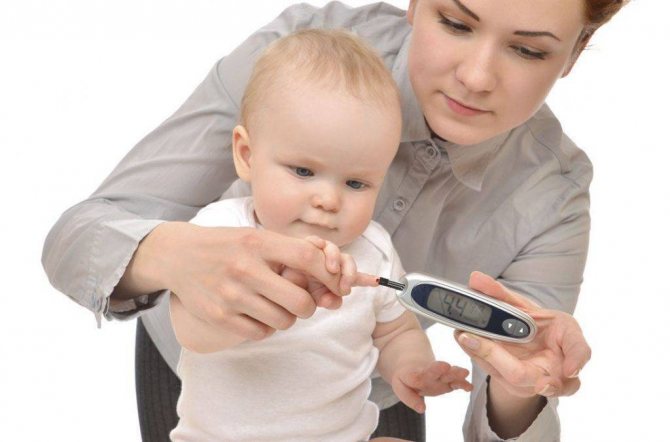
BCG is not given to a child if he has been diagnosed with an allergy to tuberculin - there is swelling at the injection site, there are severe symptoms of inflammation, and the hand swells. BCG is postponed until doctors can accurately determine the presence or absence of Koch's bacillus (the causative agent of tuberculosis) in the child's body. For this purpose, additional examinations may be prescribed - a blood test (T-SPOT test) or radiography.
Vaccination is also prohibited if immediately after the Mantoux test the child’s body temperature rises. Tuberculin cannot provoke such a reaction, which means that there is a developing infection or viral disease - you need to wait for complete recovery.
What will be the reaction
The reaction from the Mantoux test before BCG can be:
- negative – the papule at the injection site has a diameter of no more than 1 mm or is completely absent;
- doubtful - the papule/seal can be up to 5 mm in diameter;
- positive - the characteristic formation at the site of tuberculin injection is more than 0.5 cm in diameter.
BCG (anti-tuberculosis vaccination) is given only if the Mantoux test gives a negative result. It indicates that the child’s immune system functions stably and correctly, easily recognizes “enemies” and actively protects the body.
Is it possible to do Mantoux if there is no BCG?
With the standard vaccination regimen, the first Mantoux test is planned a year after the BCG done in the maternity hospital. The test is then carried out annually.
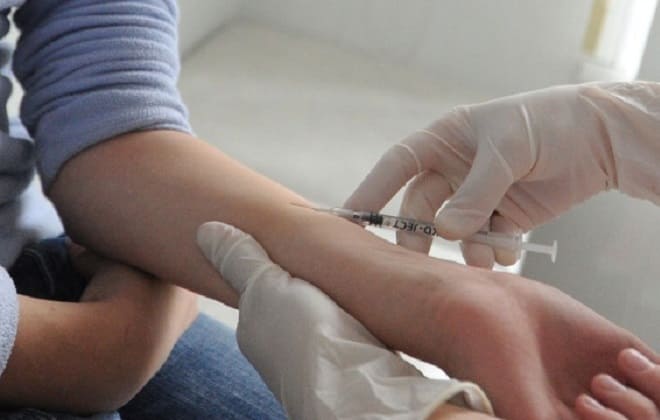
There are situations when anti-tuberculosis injection is postponed for various reasons.
The grounds for temporary medical exemptions may include: What do you think are the most important factors when choosing a medical institution?
- prematurity of the newborn;
- weight deficiency (weight less than 2.5 kg);
- purulent-septic infections;
- acute diseases.
Long-term medical withdrawal is issued in the following cases:
- HIV infection in the mother;
- immunodeficiency states;
- severe damage to the central nervous system, etc.
Sometimes parents refuse anti-tuberculosis vaccination due to fear of adverse reactions. However, the risk of infection is much higher than the likelihood of complications (abscesses, osteitis or BCGitis are extremely rare).
If the child is not vaccinated, tuberculin diagnostics are carried out more often - twice a year.
A child without BCG vaccination must be protected from contact with bacilli carriers. The Mantoux test allows you to detect possible infection much earlier than the appearance of clinical symptoms.
Reasons for increasing Mantoux
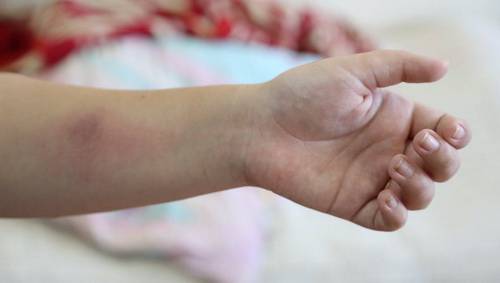
Three whole days pass between the injection of tuberculin under the child’s skin and the measurement of the reaction, and during this time certain rules must be followed. Without them, an increase in Mantoux can be provoked by various external and internal factors.
- Allergy: if it is present, any contact of the child with the allergen must be excluded. If it is unknown at the time of Mantoux vaccination, parents should protect the baby during these three days from treatment with any medications, consumption of sweets and red foods, as well as from contact with animals.
- Low-quality vaccine: Mantoux is given free of charge, so low-quality tuberculin can be delivered to any medical and child care facility, which will give a positive result in any situation. The error can be identified by contacting another institution (preferably a paid one) for re-vaccination after 3 days after the Mantoux measurement, which did not satisfy the parents. This will help you draw the right conclusions and not make a mistake with the diagnosis.
- Incorrect measurement: usually the Mantoux vaccination is done by a qualified doctor, but during measurements the human factor can play a cruel joke. The specialist checking the reaction could be inexperienced, could simply not take into account some individual characteristics of a small organism, could use the wrong ruler, and could, in the end, simply make a mistake due to fatigue.
- Individual characteristics: a positive Mantoux reaction can be observed due to a hereditary factor or the abundance of large amounts of protein foods in the child’s diet. So during three test days you need to reduce your baby’s consumption of eggs, meat, and dairy products.
To reduce all these factors to a minimum, there are certain rules for caring for the injection site after Mantoux vaccination. This allows you to make measurements on the third day more accurate and trouble-free. Unfortunately, doctors do not always give such information to parents, and the latter, in turn, are of little interest in this.
How long after can I do BCG after Mantoux?
There are several myths regarding the BCG vaccination. In particular, almost all mothers believe that if she has given BCG to her child, after the vaccine is administered, in his body there are tuberculosis bacteria, which are just waiting for a favorable moment to become activated and begin to multiply, causing an acute form of the disease. No and no again.
With BCG, mycobacteria are introduced, but of the bovine type. This is a different microorganism, it is identical to mycobacterium tuberculosis of the human type, and therefore is capable of developing acquired, cross-specific immunity against them. Such immunity does not protect against infection, but prevents the spread of Mycobacterium tuberculosis, preventing them from leaving the lymph nodes. However, there are limitations to the vaccine's activity:
• BCG should be given before infection, otherwise the vaccination will be ineffective and will not protect against tuberculous mycobacteria; • this is not a panacea for MBT infection; • immunity after a vaccine is not provided forever, it weakens after 2-3 years, and is completely lost after 6-7 years. Therefore, vaccination must be repeated at 7 and 14 years of age.
If you didn’t know this and refused vaccination in the maternity hospital, now you are probably wondering when you can get vaccinated after Mantoux. Although immunity after vaccination is not eternal, it is better than nothing. If your baby is already more than two months old, first, according to the order of the Ministry of Health of the Russian Federation, you will be given a Mantoux test. It is necessary. Vaccination is performed no earlier than three days after assessing the results, but no later than two weeks.
About the tuberculin test
As has already become clear, in most cases, children are vaccinated with BCG earlier (in the maternity hospital), and only then, at 1 year of age, the Mantoux test is administered. This procedure allows you to better assess the state of the child’s immunity and not cause significant damage to his health.
A tuberculin test (Mantoux) is done, if there is no BCG, when the unvaccinated baby reaches two months from birth.
Subcutaneous administration of Mantoux is carried out only by a doctor or nurse. In this case, tuberculin containing a certain amount of tuberculous mycobacteria is injected into the baby's hand. Today, the Mantoux reaction is one of the most popular vaccinations in the world. The discovery of this method and subsequent testing was made by the Frenchman - C. Mantoux, back in 1908. Even today, this technique occupies one of the leading places in the world and is one of the most reliable in terms of determining immune resistance and tuberculosis diagnostics.
At the r. Mantoux has some contraindications, on the basis of which this vaccine is prohibited from being administered to children of certain categories. This allows us to obtain accurate data on the state of the immune system of all children.
Depending on the type of compaction that appears, and possibly redness, the doctor makes a diagnosis.
The main diagnostic criteria are:
- lack of compaction (negative Mantoux reaction);
- the size of the compaction does not reach five millimeters (the nature of the reaction is questionable);
- the size of the seal is more than five millimeters (positive reaction).
The last reaction has some other divisions, which the doctor necessarily uses when determining the results of the test. Infection of a baby with tuberculous mycobacteria is detected with a positive Mantoux test.
The accuracy of the result obtained may be distorted by various factors.
For example, simultaneous administration of other vaccinations with a tuberculin test always leads to a distorted result for the presence of tuberculosis pathogens in the body.
In addition, factors such as:
- Allergy.
- Various infections.
- Viruses.
So, we can draw conclusions. If the newborn has no contraindications, then before being discharged from the hospital, he is given BCG. And the first Mantoux reaction is performed at 1 year. If the child has not been vaccinated against tuberculosis before 2 months, Mantoux is first given to exclude infection, and only then the BCG vaccination is given. And then vaccination is carried out according to the schedule, observing a certain interval.
What is the difference
The main difference between BCG and Mantoux is that the first is a vaccination, and the second is an allergy test (tuberculin test).
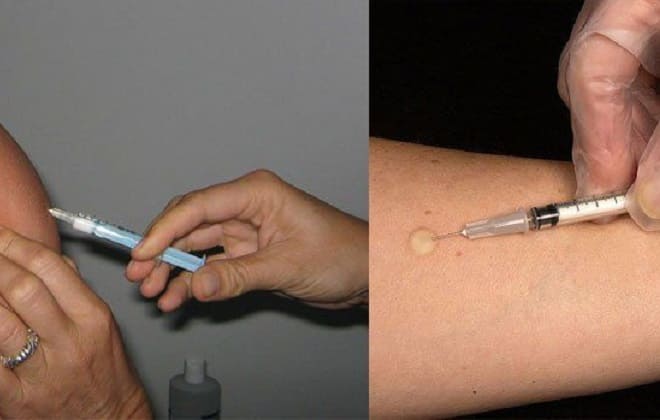
Vaccination is the introduction into the body of an immunobiological drug that promotes the development of specific immunity to tuberculosis.
After the vaccine is administered, a scar forms at the injection site, which indicates a normal response of the body.
The Mantoux test helps to detect the presence of tubercle bacilli in the child’s body.
The vaccine differs in that it contains weakened live bovine mycobacteria. Vaccination cannot provoke the disease (the culture of mycobacteria is grown in a laboratory), but the child’s immunity will be prepared to meet the “wild” pathogen.
The Mantoux reaction is an intradermal diagnostic test for which a purified tuberculin preparation made from the filtrate of heat-killed mycobacteria is used.
Vaccine composition and instructions for use
The Mantoux vaccination, as well as any other vaccine, is allowed to be given only to healthy children who have not been exposed to infectious diseases in the next month. There should be no allergies or other acute symptoms at the time of the test. Fever and runny nose are reasons to reschedule the procedure.
The mantoux vaccine contains a special substance called tuberculin. This is an extract of mycobacteria, that is, the result of the vital activity of microorganisms. Consequently, the tuberculosis bacilli themselves - live or killed - are not in the preparation. Therefore, the vaccine is absolutely harmless to the child’s body. It does not lead to infection with tuberculosis, does not in any way accelerate or provoke the spread of bacteria throughout the human body. The mantu vaccine usually includes two tuberculin units.
Dermatological diseases are severe, especially in the acute stage, as well as the presence in the medical history of pathologies such as rheumatism or bronchial asthma. In addition, in cases where quarantine is declared in a child care facility, samples are also postponed to another time.
If the child has received other scheduled vaccinations, the mantoux test can be done no earlier than a month after the last vaccination. The same period must pass since the child’s illness. Otherwise, if a mantoux vaccination is done, it will be difficult to say what reaction will follow and how objective it will be.
As a rule, Mantoux vaccination does not cause side effects in children. It is extremely rare to be diagnosed with fever and swollen lymph nodes, headache or loss of energy. These symptoms are not critical. The child just needs to be given rest, given an antipyretic, if necessary, and monitored for his condition.


